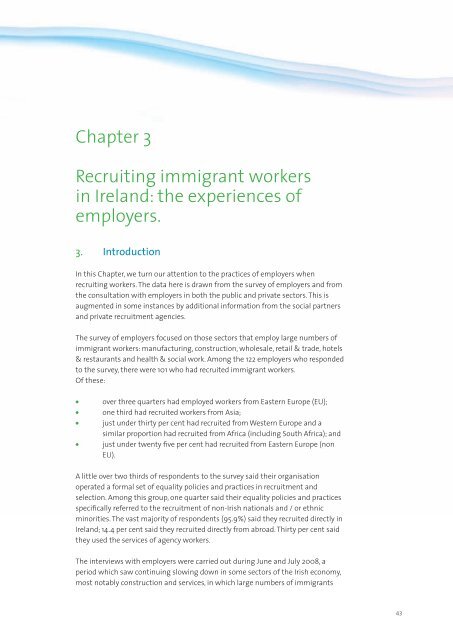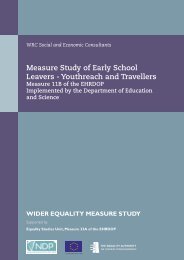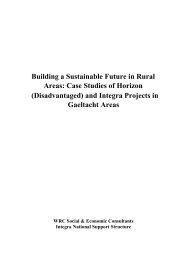Issues and Challenges in the Recruitment and Selection of ...
Issues and Challenges in the Recruitment and Selection of ...
Issues and Challenges in the Recruitment and Selection of ...
Create successful ePaper yourself
Turn your PDF publications into a flip-book with our unique Google optimized e-Paper software.
Chapter 3Recruit<strong>in</strong>g immigrant workers<strong>in</strong> Irel<strong>and</strong>: <strong>the</strong> experiences <strong>of</strong>employers.3. IntroductionIn this Chapter, we turn our attention to <strong>the</strong> practices <strong>of</strong> employers whenrecruit<strong>in</strong>g workers. The data here is drawn from <strong>the</strong> survey <strong>of</strong> employers <strong>and</strong> from<strong>the</strong> consultation with employers <strong>in</strong> both <strong>the</strong> public <strong>and</strong> private sectors. This isaugmented <strong>in</strong> some <strong>in</strong>stances by additional <strong>in</strong>formation from <strong>the</strong> social partners<strong>and</strong> private recruitment agencies.The survey <strong>of</strong> employers focused on those sectors that employ large numbers <strong>of</strong>immigrant workers: manufactur<strong>in</strong>g, construction, wholesale, retail & trade, hotels& restaurants <strong>and</strong> health & social work. Among <strong>the</strong> 122 employers who respondedto <strong>the</strong> survey, <strong>the</strong>re were 101 who had recruited immigrant workers.Of <strong>the</strong>se:• over three quarters had employed workers from Eastern Europe (EU);• one third had recruited workers from Asia;• just under thirty per cent had recruited from Western Europe <strong>and</strong> asimilar proportion had recruited from Africa (<strong>in</strong>clud<strong>in</strong>g South Africa); <strong>and</strong>• just under twenty five per cent had recruited from Eastern Europe (nonEU).A little over two thirds <strong>of</strong> respondents to <strong>the</strong> survey said <strong>the</strong>ir organisationoperated a formal set <strong>of</strong> equality policies <strong>and</strong> practices <strong>in</strong> recruitment <strong>and</strong>selection. Among this group, one quarter said <strong>the</strong>ir equality policies <strong>and</strong> practicesspecifically referred to <strong>the</strong> recruitment <strong>of</strong> non-Irish nationals <strong>and</strong> / or ethnicm<strong>in</strong>orities. The vast majority <strong>of</strong> respondents (95.9%) said <strong>the</strong>y recruited directly <strong>in</strong>Irel<strong>and</strong>; 14.4 per cent said <strong>the</strong>y recruited directly from abroad. Thirty per cent said<strong>the</strong>y used <strong>the</strong> services <strong>of</strong> agency workers.The <strong>in</strong>terviews with employers were carried out dur<strong>in</strong>g June <strong>and</strong> July 2008, aperiod which saw cont<strong>in</strong>u<strong>in</strong>g slow<strong>in</strong>g down <strong>in</strong> some sectors <strong>of</strong> <strong>the</strong> Irish economy,most notably construction <strong>and</strong> services, <strong>in</strong> which large numbers <strong>of</strong> immigrants43




